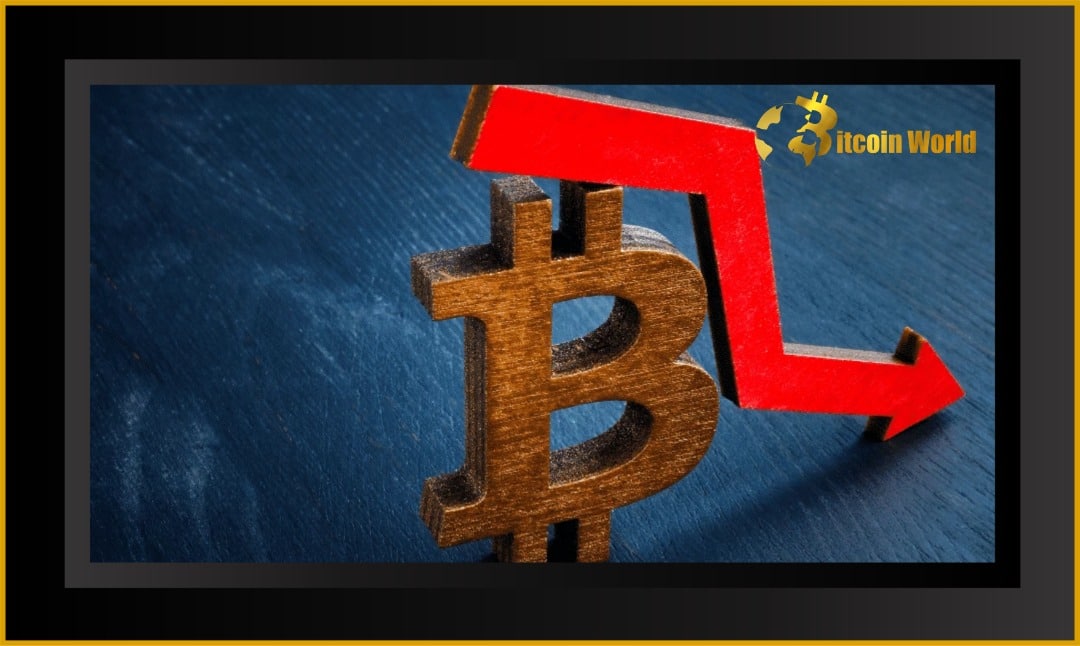Hey Crypto Traders,
Ever wake up and check your crypto portfolio only to see a sudden dip? Well, if you were watching Bitcoin during Shanghai trading hours recently, you might have experienced a bit of a jolt. Bitcoin briefly slipped below the $42,000 mark, and all eyes are on whether this is just a fleeting moment or a sign of deeper market currents. Let’s dive into what happened and what it could mean for your crypto holdings.
Shanghai Markets Feeling the Heat: What Happened?
On a recent trading day, Chinese markets experienced a significant downturn. Think of it like this: if the economic engine of China sputters, it can send ripples across global markets, including the crypto sphere. Here’s a quick rundown of what triggered the market jitters in Shanghai:
- Indices Took a Tumble: The Shanghai Composite Index dropped by over 2%, while the Shenzhen Component Index and ChiNext Index saw even steeper falls, plunging more than 3% and 4% respectively. That’s a pretty significant drop in a single day!
- Inflation Surprises: Producer inflation in China jumped to 8.3% year-over-year in March, exceeding the expected 7.9%. Consumer inflation also edged up to 1.5%, above the 1.2% forecast. These figures suggest economic pressures are building up.
Inflation Breakdown: Producer vs. Consumer
This gap between producer and consumer inflation is a key point of concern. Why? Because it raises some important questions:
- Are consumers about to feel the pinch? If producer prices are rising much faster than consumer prices, it could mean that consumer inflation is on its way up. This could impact spending and overall economic growth.
- Are companies absorbing costs? Alternatively, it could indicate that businesses are struggling to pass on increased costs to consumers, which would squeeze their profit margins.
Ramiz Chelat, a portfolio manager at Vontobel Asset Management, highlighted this exact concern, stating, “I think the more significant aspect is the large disparity between CPI and PPI, which implies that pricing power amongst most companies in China is weak and they’re taking a knock on margins.”
Lockdowns and Property Woes: Adding Fuel to the Fire
Beyond inflation, other factors are contributing to the bearish sentiment in China:
- Zero-COVID Policy and Lockdowns: The reintroduction of lockdowns in China, the world’s second-largest economy, is casting a shadow over economic prospects. Strict lockdowns disrupt supply chains, impact businesses, and dampen overall economic activity.
- Property Market Concerns: The ongoing issues in China’s property market continue to weigh heavily on investor sentiment. Real estate stocks have been particularly hard hit, reflecting deeper anxieties about the sector’s stability.
- Rising US Treasury Yields: Adding to the global economic mix, US Treasury yields are on the rise. This often signals a “flight to safety” as investors move towards less risky assets. Interestingly, reports indicate that foreign investors are pulling out of China’s bond market at the fastest rate since 2015, suggesting capital outflow.
Bitcoin’s Shanghai Dip and US Rebound: A Tale of Two Markets?
Now, let’s bring it back to Bitcoin. While Shanghai markets were under pressure, Bitcoin showed an interesting reaction:
- Sunday Surge in the US: Bitcoin actually saw a surge in the US on Sunday afternoon, reaching as high as $43,400.
- Shanghai Session Drop: However, as Shanghai trading began and US futures opened (around 10 p.m. Euro time), Bitcoin experienced its biggest drop, falling to around $42,000 and hovering there during the Asian trading session.
- European Morning Recovery?: Intriguingly, Bitcoin started to regain some ground in European morning trading. This could suggest that the Shanghai market’s influence on BTC might be limited, or at least temporary.
Bitcoin Price Action – Key Moments:
| Market/Time | Bitcoin Price Movement |
| US Trading (Sunday Afternoon) | Surge to $43,400 |
| Shanghai Trading Hours Start/US Futures Open (10 PM Euro Time) | Drop to $42,000 |
| European Morning Trading | Signs of Recovery |
US Stocks and Oil Prices: What’s Next?
The article also touches upon the potential impact on US stocks and oil prices:
- US Stocks – Adverse Correlation?: Historically, US stocks and Shanghai markets sometimes show an inverse relationship. If Shanghai struggles, could US stocks benefit? However, US futures were in the red at the time of writing, so the picture is still unfolding.
- Oil Prices – Brent Crude Below $100?: There’s a mention of Brent oil potentially falling below $100. Lower oil prices could ease inflationary pressures and potentially provide some relief to global markets.
Key Takeaways for Crypto Traders
So, what can we glean from this market snapshot?
- Global Economic Events Matter: This episode highlights how global economic events, particularly in major economies like China, can influence the crypto market. Keep an eye on international economic news!
- Bitcoin’s Resilience (Maybe): The fact that Bitcoin showed signs of recovery in European trading after the Shanghai dip could be interpreted as a sign of resilience or decoupling from specific regional market pressures. However, it’s still early days.
- Volatility is the Name of the Game: As always, the crypto market is volatile. Price dips and surges are part of the landscape. Stay informed, manage your risk, and don’t panic sell based on short-term fluctuations.
Looking Ahead: Is This a #Bearish Sign?
Is this Shanghai-driven dip a harbinger of a larger #BearMarket? It’s too early to definitively say. However, it’s a reminder that the crypto market is interconnected with the global economy and sensitive to macroeconomic factors. Keep monitoring inflation data, geopolitical events, and overall market sentiment. And as always, do your own research and invest wisely!
Stay tuned for more crypto market updates!
Related Reads:
– Ex-SEC Chair, Jay Clayton Believes Cryptocurrency Industry Is For Long Haul
Disclaimer: The information provided is not trading advice, Bitcoinworld.co.in holds no liability for any investments made based on the information provided on this page. We strongly recommend independent research and/or consultation with a qualified professional before making any investment decisions.


